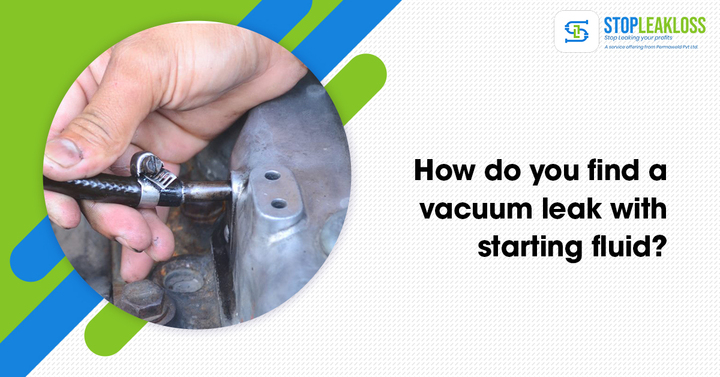
How do you find a vacuum leak with starting fluid?
A vacuum leak can create various drivability issues by introducing excess, unwanted air into the engine, causing the air/fuel combination to become lean. Intake vacuum operates sensors, actuators, and power brakes in modern internal combustion (multi-port fuel injection) engines (on some vehicles). Older engines also use it to manage emissions and pull fuel into the combustion chamber.
As a result, even a minor vacuum loss can fool you and your auto computer into thinking a sensor or system needs to be repaired. Then you begin replacing components in the hopes of resolving the issue, which you are unable to do.
A vacuum leak frequently produces an audible hissing sound, making it easier to locate; yet, you may not hear anything. To discover hard-to-find leaks, auto shops employ specialized, expensive equipment. However, you can utilize easy procedures to trace the most common vacuum leaks before heading to the repair.
This blog shows you how to locate a vacuum leak.
What is a Vacuum Leak, and How Can You Find It?
- Without using any tools, the cheapest and easiest approach to locate a vacuum leak at home is to carefully spray a flammable fluid around the locations where you assume the leak may be coming from. Then, as a result of the engine sucking in and combusting the fluid, the RPM will rise, indicating the leak’s location.
- You can wind up with a fire in your vehicle if you’re not careful! When looking for vacuum leaks, we always suggest utilizing the right instruments! Do it at your own risk and outside whenever possible. Maintain close proximity to a fire extinguisher.
- All vacuum lines, tubes, and components should be identified. The first step is to identify all of your engine’s vacuum lines. If your automobile doesn’t have a label under the hood, you’ll probably be able to obtain that information on the internet or in your handbook. If the engine has been modified, it becomes a case-by-case situation, and you’ll need to get to know the intricacies of your system.
- Examine the area with your eyes. Look over all of the cables and connections for any obvious problems. A line could be broken in two, disconnected, or cracked. If this is the case, you have discovered the source of the issue.
- Use a vacuum tester to see if there is any leakage. Vacuum leaks can sometimes be found within difficult-to-reach circuits and systems. A defective brake booster, for example, will cause a vacuum leak that you won’t be able to detect by looking at it. The virtuous news is that you can use your expensive brake bleeder. Connect it to the vacuum lines, pump it up, and watch the reading. Then, if it can hold a vacuum, cross it off your list of suspects and go on to the next one.
- Vacuum leaks are being checked in the intake manifold. Unlike the scene in Fast & Furious where Brian’s “Danger to Manifold” causes a floorboard to pop off, your manifold may be jeopardized. Check the throttle body and carb for any cracks or damage. Check the manifold for any damaged vacuum sensors as well.
- Water is used to find vacuum leaks. Water alone can be used to locate a vacuum leak. You can hear water being sucked into the engine when you spray it over a vacuum leak. It won’t affect idle, but it can help with big vacuum leaks, such as hard-to-see cracks in lines.
Propane should be added. Detecting manifold and vacuum leaks with a propane torch is a simple process. Open the valve on your propane torch without lighting it, then run the tip along with the numerous gasket positions or vacuum connections. Listen to the idle while doing so. The propane entering the combustion chamber is responsible for any RPM spikes.




[…] […]